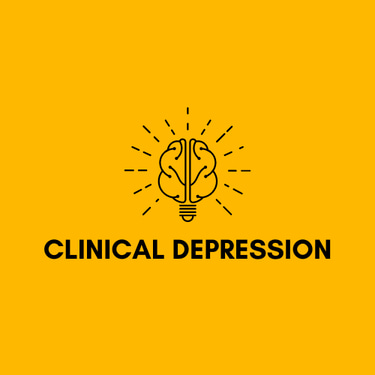For Questions: Text (833)233-0869
The Role of Telehealth Mental Health Therapy in Managing Anxiety


Anxiety is a common mental health disorder that affects millions of people worldwide. It can manifest in various forms, including generalized anxiety disorder (GAD), social anxiety, panic disorder, and specific phobias. For those suffering from anxiety, the impact on daily life can be significant, affecting work, relationships, and overall well-being. Fortunately, advancements in technology have paved the way for innovative approaches to treatment, one of which is telehealth mental health therapy. This method has become increasingly popular due to its accessibility, convenience, and effectiveness in managing anxiety.
Understanding Anxiety and Its Impact
Anxiety is more than just occasional worry or stress; it's a persistent condition that can dominate thoughts and actions. Symptoms of anxiety include excessive worry, restlessness, irritability, difficulty concentrating, and physical symptoms such as a racing heart, sweating, and fatigue. These symptoms can interfere with everyday activities, making it challenging to function at work, maintain relationships, or enjoy life.
The causes of anxiety are multifaceted, involving a combination of genetic, environmental, and psychological factors. Stressful life events, trauma, chronic illness, and even certain medications can trigger or exacerbate anxiety. Without proper treatment, anxiety can lead to more severe mental health issues, including depression, substance abuse, and an overall decline in quality of life.
The Evolution of Mental Health Therapy
Traditionally, mental health therapy for anxiety involved in-person sessions with a licensed therapist. These sessions typically took place in a clinical setting, where individuals could receive various forms of therapy, such as cognitive-behavioral therapy (CBT), exposure therapy, or medication management. While this approach has been effective, it also has limitations, particularly in terms of accessibility.
Not everyone has the time, transportation, or proximity to a mental health professional to attend regular therapy sessions. Additionally, the stigma associated with seeking mental health care can prevent some individuals from pursuing the help they need. These barriers have contributed to a growing interest in alternative methods of treatment, leading to the rise of telehealth mental health therapy.
What is Telehealth Mental Health Therapy?
Telehealth mental health therapy, also known as teletherapy or online therapy, is the delivery of mental health services through digital platforms. This approach allows individuals to connect with licensed therapists from the comfort of their own homes, using devices such as smartphones, tablets, or computers. Telehealth mental health therapy can be conducted through video calls, phone calls, text messaging, or even email, depending on the preference and needs of the patient.
The COVID-19 pandemic significantly accelerated the adoption of telehealth services across all areas of healthcare, including mental health. With social distancing measures in place and a heightened need for mental health support, teletherapy became an essential tool for managing anxiety and other mental health conditions. Even as the world has begun to return to normal, the demand for telehealth mental health therapy remains strong due to its numerous benefits.
Benefits of Telehealth Mental Health Therapy for Anxiety
Accessibility and Convenience
One of the most significant advantages of telehealth mental health therapy is its accessibility. Individuals who live in remote or rural areas, where mental health services may be limited, can now access care without the need for long-distance travel. Teletherapy also eliminates the need for time-consuming commutes, making it easier for those with busy schedules to fit therapy sessions into their lives.For individuals with anxiety, particularly social anxiety, the thought of leaving home to attend therapy can be overwhelming. Telehealth mental health therapy provides a more comfortable and less intimidating environment, allowing patients to engage in therapy from a place where they feel safe and secure.
Reduced Stigma
The stigma surrounding mental health care is a significant barrier for many people who need help. Telehealth mental health therapy offers a level of anonymity that can reduce the fear of judgment or embarrassment. Patients can receive treatment discreetly, without the concern of being seen entering a therapist's office.Flexibility in Treatment Options
Telehealth mental health therapy offers a variety of treatment modalities, including individual therapy, group therapy, and even specialized programs for specific anxiety disorders. Patients can choose the format that best suits their needs and preferences. For example, some individuals may benefit from the real-time interaction of video sessions, while others may prefer the convenience of text-based therapy, where they can communicate with their therapist asynchronously.Continuity of Care
Continuity of care is crucial for effective anxiety management. Telehealth mental health therapy allows for consistent and uninterrupted treatment, even in situations where in-person visits may not be possible. This is particularly important for individuals who travel frequently, have mobility issues, or face other challenges that make attending regular in-person sessions difficult.Cost-Effectiveness
Telehealth mental health therapy can be more cost-effective than traditional in-person therapy. Without the need for travel, patients can save on transportation costs and reduce the time taken off work or other responsibilities. Additionally, many teletherapy platforms offer competitive pricing, making mental health care more affordable for a broader range of individuals.Enhanced Privacy and Security
Privacy is a concern for many individuals seeking mental health care. Telehealth platforms are designed with robust security measures to protect patient information and ensure confidentiality. Patients can feel confident that their personal and medical information is secure during their therapy sessions.
How Telehealth Mental Health Therapy Works
The process of starting telehealth mental health therapy is straightforward. Patients typically begin by choosing a teletherapy platform or finding a licensed therapist who offers online services. Many telehealth platforms provide a directory of therapists, allowing patients to filter by specialty, location, and availability.
Once a therapist is selected, the patient will schedule an appointment, just as they would for an in-person session. Depending on the platform or therapist, the session may take place via video call, phone call, or messaging. During the session, the therapist will use evidence-based techniques to help the patient manage their anxiety, just as they would in a traditional setting.
For ongoing treatment, patients can schedule regular sessions, track their progress, and adjust their treatment plan as needed. Many telehealth platforms also offer additional resources, such as educational materials, mindfulness exercises, and support groups, to complement the therapy sessions.
Challenges and Considerations
While telehealth mental health therapy offers many benefits, it is not without its challenges. Some individuals may find it difficult to connect with a therapist through a screen or may miss the in-person interaction that traditional therapy provides. Additionally, technical issues, such as poor internet connection or difficulty using digital platforms, can disrupt therapy sessions and hinder progress.
It's also essential to consider the suitability of telehealth mental health therapy for specific cases. For individuals with severe anxiety or co-occurring mental health conditions, a more intensive level of care may be necessary, which could require in-person treatment. However, telehealth can still play a supportive role in conjunction with other forms of therapy.
The Future of Telehealth Mental Health Therapy
The future of telehealth mental health therapy looks promising. As technology continues to advance, so will the tools and platforms available for delivering mental health care. Virtual reality (VR) therapy, for example, is an emerging field that has the potential to revolutionize the treatment of anxiety and other mental health conditions. VR therapy can provide immersive experiences that simulate real-life scenarios, allowing patients to confront and manage their anxiety in a controlled environment.
Artificial intelligence (AI) is another area of growth in telehealth mental health therapy. AI-driven chatbots and virtual therapists are being developed to provide immediate support and intervention, particularly for individuals in crisis. While these technologies are not a replacement for human therapists, they can serve as valuable adjuncts to traditional therapy, offering additional support and resources.
Conclusion
Telehealth mental health therapy has emerged as a powerful tool for managing anxiety, offering accessibility, convenience, and flexibility that traditional therapy methods may lack. As more individuals seek out mental health care, the demand for teletherapy is likely to continue growing. For those suffering from anxiety, telehealth mental health therapy provides a viable and effective option for receiving the support and treatment they need to improve their quality of life.
By breaking down barriers to care and embracing technological advancements, telehealth is transforming the landscape of mental health treatment. Whether through video calls, messaging, or emerging technologies like VR and AI, telehealth mental health therapy is poised to play a critical role in the future of anxiety management.
©2025
Clinical Depression
For Questions: Text
(833) 233-0869
